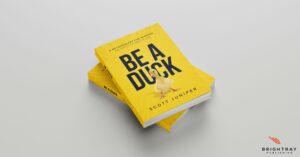The Basics
Unless you’re already producing online content, chances are you’re clueless on what SEO even stands for. SEO is “Search Engine Optimization,” and when intentionally engaged, you can use SEO tactics to make your content easier to find and accessible to a large audience. SEO helps your content reach targeted traffic and improve your site’s ranking.
Search engines are flooded with millions of sites, but most users don’t look beyond the first 1-2 pages of results. The majority of traffic on the web comes from people using search engines to either 1) find websites they’re familiar with or 2) address a need they have (shopping, information, etc.)
Optimizing your content to appear in search results is key to getting in those first few pages. Luckily, there are some simple tactics you can use to improve your SEO.

The Tactics
The Dos
- Use your keyword liberally: The keyword you’ve chosen is the one that people search for when they’re looking for results. Ideally, the keyword should be specific enough to get to the people actually searching for your content but not so niche that your page never comes up. For this blog, the keyword will be “SEO.” Then, everyone looking into SEO will have the chance of finding this page. Some users will be looking for courses on SEO, but others will be looking for a basic breakdown on how it works.
The more you use the keyword in your content, the more “hits” or flags that Google will see. If you only use your keyword once, that’s not a very strong connection and isn’t likely to fulfill the needs of someone looking for SEO help. Your keyword should be included in the title and the URL to generate a stronger SEO.
- Include media: Adding photos or videos will not only make your content more visually appealing, it will also boost your SEO. If you have control over the “tags” assigned to the media, make sure you include your keyword in the tag and description. If those elements are beyond your control, try to look for a photo or video that already uses your keyword in the title/name, caption, or description. Again, this is an effort to flag to Google that your content is related to what’s being searched.
- Include external links: Links to external sites are another flag for Google to process. It also means that you don’t have to know everything about your topic—you can reference other sources as needed. Make sure you include links to high-quality sources; this will boost your credibility simply by associating your content with that source.
- Watch your length: Your content must manage a balance of being readable and informative. If your content is too short (under 500 words), then its SEO will be lower. Breaking content into multiple paragraphs rather than long blocks of text can make your content more manageable and visually accessible. Use bullet points and other formatting to change up the delivery if you’re worried about the content appearing too dense.
The Don’ts
- Go too long: Your title and URL should inform the reader what your site is about and include your keyword; however, you don’t want either to get too long. Your title needs to be catchy and to the point. If you need to provide more information, simply add a subtitle to provide context. Your URL should be succinct while also describing your site—keep it under 75 characters.
- Cut and paste: Whether it’s from your other sites or an outside source, don’t do a cut-and-paste job. Your content should be original and new to the site you want people to access. Definitely include your other sites and references in links, but it looks sloppy and doesn’t improve your SEO to copy large chunks of text from other sites. Use the basic citation rule: if it’s more than a paragraph, you can probably find a way to trim the message.
- Approach it the same: This is related to the above tip, but it also has to do with your overall subject. Some subjects have been so thoroughly discussed that it’ll be near impossible for your content to make it onto the first 10 pages, let alone the first 1-2. Try to stick with subjects that have enough relevance for people to seek out more information, but they aren’t so overdone that you can’t compete. If you are discussing a “tired” subject, approach it in a new way, and make sure your keyword reflects that difference.
Conclusion
SEO isn’t an approach you can master overnight. These tactics will help you improve your site’s SEO, but if you want a competitive advantage, seek out other sources. Inc. offers several articles on SEO and your business, and BackLinko reviews SEO in more detail. There are even SEO experts available for hire. Until then, follow these basic tips and you’ll be right on track.
Having a published book can significantly boost your website’s ranking and SEO. Books are considered authoritative sources of information, and when your book is linked to your website, it enhances your site’s credibility in the eyes of search engines like Google. Additionally, promoting your book through various channels, such as social media, blogs, and guest appearances, can generate backlinks to your website, further improving its search engine ranking. However, navigating the intricacies of publishing and leveraging your book to enhance SEO requires expertise and strategy. That’s where BrightRay Publishing comes in. Our team not only assists you in writing, editing, and publishing your book but also provides tailored guidance on utilizing your book to strengthen your website’s SEO. By partnering with BrightRay Publishing, you can maximize the benefits of having a book while optimizing your website’s visibility and search engine ranking.
Schedule a call with us today to explore how BrightRay Publishing can help you achieve your publishing goals while enhancing your website’s SEO performance.




